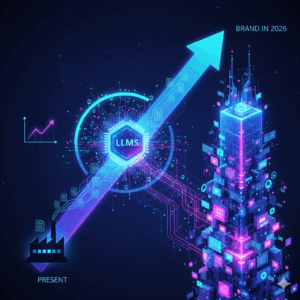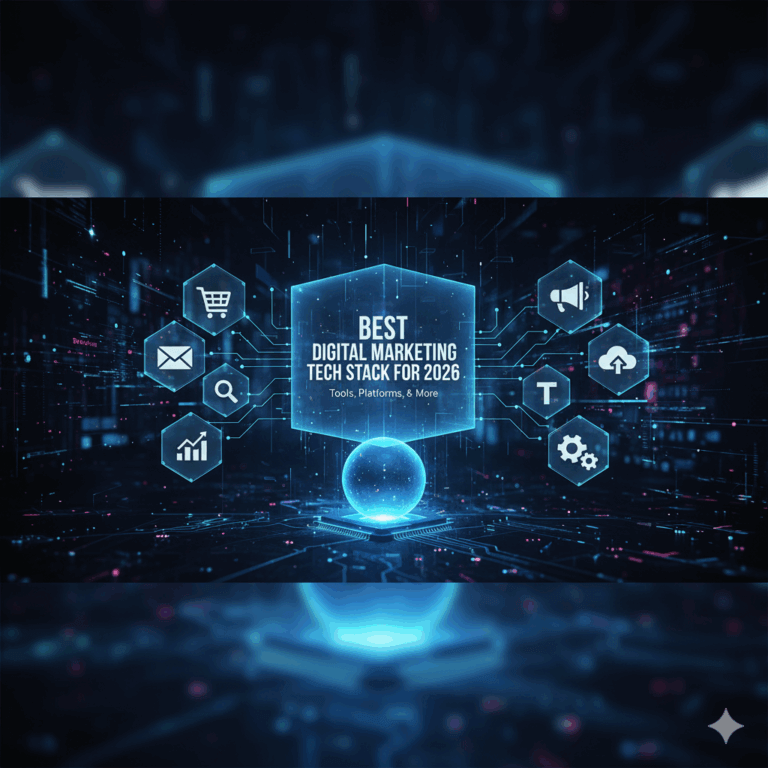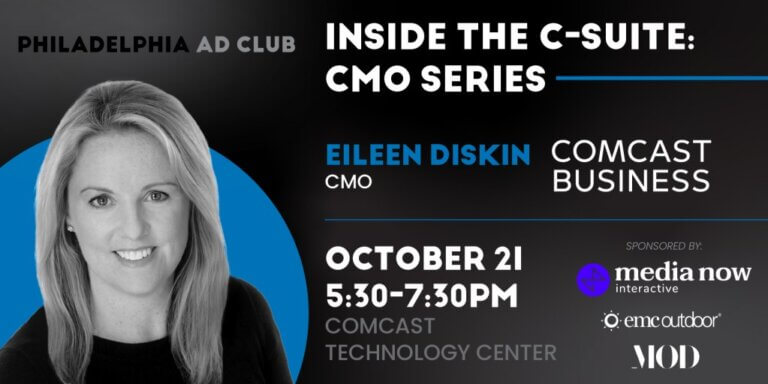As the digital landscape continues to evolve, marketers are under increasing pressure to manage more channels, data, and customer touchpoints than ever before. To stay competitive in 2026, it’s no longer enough to simply have a few marketing tools, you need a cohesive digital marketing stack that empowers efficiency, personalization, and data-driven growth.
In this article, we’ll break down what a marketing stack is, explore the essential categories it should include, outline its benefits, and finish with an example stack and some FAQs.
What is a Digital Marketing Tech Stack?
A marketing tech stack (or martech stack) refers to the collection of technologies, platforms, and tools that a business uses to execute, analyze, and improve its marketing activities. These tools work together, ideally through integrations, to streamline workflows and enable smarter decision-making.
Think of it as your digital marketing ecosystem: each tool plays a specific role, but together they create a seamless machine for attracting, engaging, and converting customers.
Core Categories in a Modern Marketing Tech Stack
A well-rounded marketing tech stack for 2026 should cover the full funnel, from brand awareness and lead generation to conversion, retention, and evangelism. Here’s a breakdown of the major tool categories to include:
1. Customer Relationship Management (CRM)
Your CRM is the heart of your stack. It stores customer data, tracks interactions, and helps you manage relationships over time. If you don’t have one or are using Excel, stop. Get a CRM.
2. Marketing Automation
Automation platforms manage and scale campaigns across email, SMS, and social, nurturing leads automatically based on behavior and segmentation. This is how you nurture leads into sales.
3. Content Management System (CMS)
A CMS allows your team to create, publish, and optimize content efficiently while maintaining consistent branding.
4. Analytics and Attribution
Data and insights power everything. Analytics tools measure performance, attribute results to channels, and identify ROI.
5. Advertising & Media Platforms
Paid media is critical for reach and growth. These platforms manage and optimize campaigns across search, social, display, and programmatic.
6. SEO and AI Search Tools
With the rise of AI-driven search engines, SEO now extends beyond keywords, including structured data, content optimization, and AI visibility.
7. Social Media Management
These tools schedule, monitor, and analyze social content across multiple networks, essential for brand engagement and community building.
8. Customer Data Platform (CDP)
A CDP unifies customer data from multiple sources to create a single, 360-degree customer profile. This is important for personalization and compliance.
9. Conversion Rate Optimization (CRO)
CRO tools help identify friction points, run A/B tests, and enhance the user experience for higher conversions.
10. Collaboration and Project Management
Marketing teams need strong operational systems for planning, tracking, and executing campaigns efficiently.
What are the Benefits of a Marketing Tech Stack?
1. Unified Data and Insights
When all tools are integrated, you gain a single source of truth for performance metrics, leading to better decisions and less guesswork.
2. Improved Efficiency
Automation, shared workflows, and integrated data reduce manual work and enable marketers to focus on strategy rather than busywork.
3. Enhanced Personalization
With unified customer data, teams can deliver more relevant content, offers, and experiences, improving engagement and conversions.
4. Greater Agility
A flexible, well-integrated stack lets teams pivot quickly when platforms change (as they often do). You can adopt new technologies without losing your core structure.
5. Scalable Growth
As your business expands, a strong stack scales with it — supporting new campaigns, audiences, and regions without overcomplication.
Building the Best Stack for 2026: Key Considerations
- Integration First: Prioritize tools that play well together via APIs and native integrations.
- AI-Driven Capabilities: From predictive analytics to automated creative generation, AI is now essential.
- Privacy & Compliance: Ensure your stack is compliant with GDPR, CCPA, and new AI transparency standards.
- Training & Adoption: Even the best tools fail without user adoption — plan for onboarding and cross-departmental buy-in.
- Budget Alignment: Don’t chase shiny tools — focus on ROI and business objectives.
An Example Digital Marketing Tech Stack
Below is an example of a marketing tech stack a brand or agency might use, including several potential tools that may be a good fit for your business. This is not an endorsement of any of the tools or platforms. It is simply a demonstration of what a stack might look like:
1. Strategy & Collaboration
These are your team’s operational and planning foundations.
- Project Management: Asana, Monday.com, ClickUp, Notion.
- Communication: Slack, Microsoft Teams, Chanty.
- File Sharing & Storage: Google Workspace, Microsoft Sharepoint.
2. Customer Relationship Management (CRM)
Your system of record for leads, customers, and deal pipelines.
- Primary CRM: HubSpot, Salesforce, Pipedrive, Zoho CRM.
- Call Tracking: Call Tracking Metrics, Call Rail
3. Marketing Automation & Email
Manages customer nurturing, behavior-based workflows, and email campaigns.
- Automation Hub: Hubspot, ActiveCampaign
- Enterprise Option: Marketo Engage
- Email Campaigns: Klaviyo
4. Content Management System (CMS)
Your website’s backbone for publishing and optimization.
- CMS Platform: Umbraco, WordPress, Webflow, Contentful, HubSpot CMS.
5. Advertising & Paid Media Tools
For managing, optimizing, and reporting across digital ad channels.
- Search & Display Ads: Google Ads
- Social Advertising: Meta Ads Manager (Facebook & Instagram), LinkedIn Campaign Manager, TikTok Ads Manager, Reddit
- Programmatic / CTV: The Trade Desk, Simpli.FI
- Ad Creative Automation: Canva for Teams, Creatopy, Adobe Express
- Demand Side Platforms: The Trade Desk, Amazon
6. Analytics & Attribution
Tracks performance, unifies reporting, and attributes revenue to marketing activity.
- Web & Conversion Analytics: Google Analytics 4 (GA4), Adobe Analytics
- Data Visualization: Looker Studio (formerly Google Data Studio)
- Attribution Platform: Triple Whale, Wicked Reports
- Heatmaps & User Behavior: Hotjar, Microsoft Clarity
- AI Search Analytics: Cognizo, Profound, Adobe LLM Optimizer
7. SEO & AI Search Optimization
Optimize for both traditional search and emerging AI-driven search engines.
- Keyword & Technical SEO: Semrush, Ahrefs, Screaming Frog
- Content Optimization: SurferSEO or Clearscope
- Content Research: AnswerThePublic, Buzzsumo
8. Social Media Management
For scheduling, monitoring, and analyzing content performance across platforms.
- Scheduling & Analytics: Sprout Social, Hootsuite
- Community Engagement: AgoraPulse
- Creative Content: Canva, Adobe Express
9. Customer Data & Personalization
Unify user data from all channels and create personalized experiences.
- Customer Data Platform (CDP): Segment, Salesforce Data Cloud, Tealium, BlueConic, TreasureData
- Personalization Engine: Dynamic Yield or Optimizely
10. Conversion Rate Optimization (CRO) & Testing
To improve site performance and boost ROI.
- A/B Testing Platform: VWO, Optimizely
- Session Recordings & Feedback: Hotjar
- Landing Page Optimization: Unbounce, Instapage
11. Data Integration & Automation Layer
Ensures all platforms talk to each other and sync seamlessly.
- Automation Bridge: Zapier, Make (formerly Integromat)
- API Connector: Fivetran, Supermetrics
- Cloud Data Warehouse: Google BigQuery
12. AI & Emerging Tools (2026 and Beyond)
AI-driven marketing tools are essential for staying ahead.
- AI Copywriting & Ideation: Jasper, Copy.ai, ChatGPT for Teams
- AI Ad Optimization: Pattern89, Revealbot
- Predictive Analytics: Pecan AI
- AI Design & Video: Runway, Synthesia
Frequently Asked Questions
- What is the difference between a marketing stack and a martech stack?
- They’re often used interchangeably. However, “martech stack” specifically refers to technology tools, while “marketing stack” can include both tools and processes.
- How big should a marketing stack be?
- There’s no ideal size as it depends on company size and needs. A small business might use 5–10 core tools, while enterprise-level teams may manage 40+ integrated solutions.
- Can AI replace parts of the marketing stack?
- AI won’t replace your stack, but it will enhance it. Expect AI tools to take over repetitive tasks, improve targeting, and enable deeper insights — not remove human strategy.
- How often should you audit your marketing stack?
- At least once a year. As new tools emerge and priorities shift, annual audits help ensure efficiency and prevent redundancy.
- What’s the most important category to invest in?
- Data and automation. A CRM, automation platform, and analytics suite form the foundation of any effective modern marketing stack.











